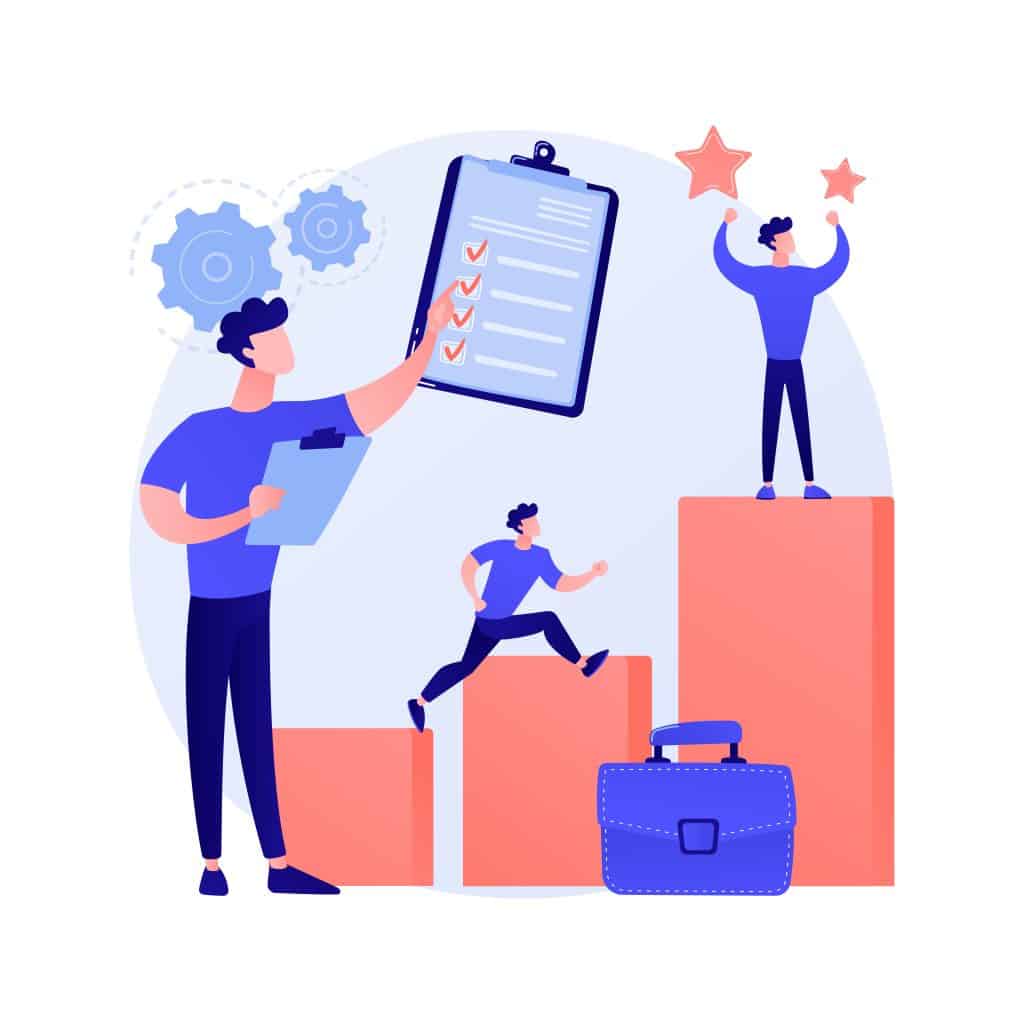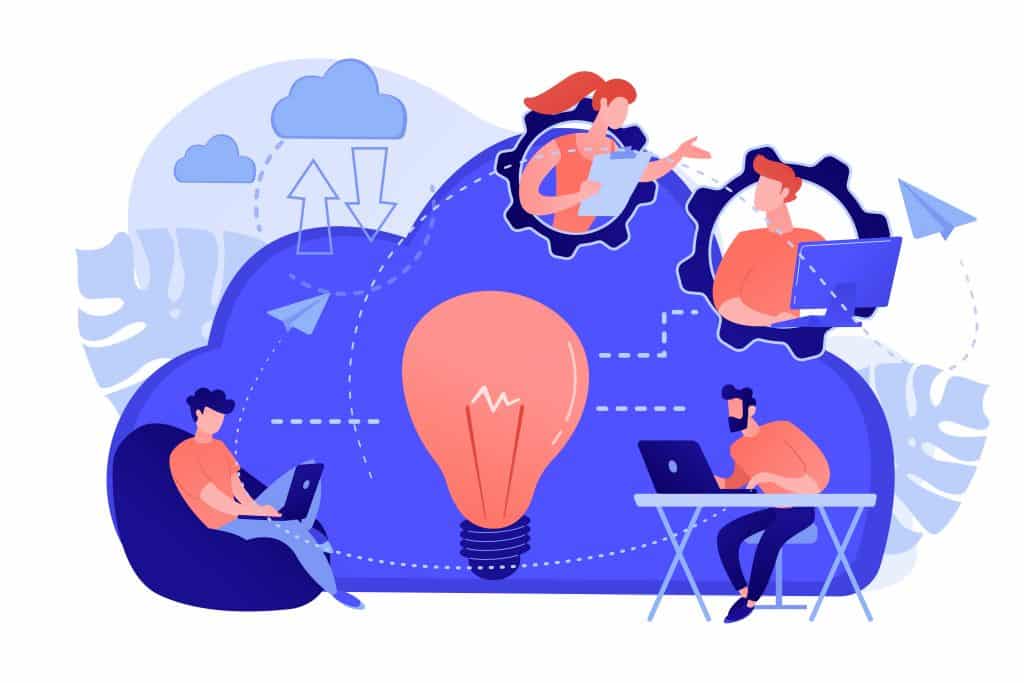Driving Operational Excellence and Resiliency in Government through People and Process Transformation
Government Case Study
Continuous Process Improvement: Achieving Timely and Tangible Results

Julian Smith,
Head of Agile Practice,
Digital Transformation Agency
Being more agile and
innovative
The pandemic and the pace of technology continue to show that the world is changing very rapidly.
Julian Smith , the Head of Agile Practice at Australia’s Digital Transformation Agency (DTA), says that this “rapid change,” according to the World Economic Forum and the OECD, has been referred to as “the fourth industrial revolution.” It is underpinned by “socio-economic uncertainty, constant change, digital disruption and ever changing citizen service expectations.” What is required therefore is “agility and innovation,” two concepts that have been promoted by Prime Ministers and other leaders from both sides of politics. In other words, concepts that are universally endorsed and are also part of “the APS Workforce Strategy 2025, and the DTA’s Digital Service Standard.” In fact, having agility and innovation in these times was the basis for an “Agile Nations agreement [1] signed by seven major advanced economies late last year,” whilst the US is also talking up these terms and developing initiatives of their own.
Having established that agility and innovation are important, what does this mean for governments in Australia?
Essentially agility is about “the evolution of management practices. It is not a specific delivery methodology or framework, but is about how we navigate the uncertainty and complexity of the environment that we are in.” To be truly agile and innovative, “since the target is now shifting and moving,” rather than engaging in large government projects that “could take multi-years to complete and cost hundreds of millions of dollars, we should be doing smaller experiments.”
In practice, this means “breaking down our larger issues and wicked problems into smaller batches so we get closer to the target. Then test our assumptions early and often.” Doing things this way also helps to “mitigate and reduce risk.” Traditionally, it also takes a while for a project to realise its value. Taking an agile approach means “higher business value is delivered earlier,” and in fact, this kind of “continuous improvement” means that costs are reduced as value is increased.
These kinds of approaches are working very successfully across a number of Australian agencies, from the ABS to Australia Post and numerous federal departments. For instance, some have seen a “1 00-fold increase in yearly production deployments with a 98% cost reduction.” Others have seen a “400% increase in productivity over 18 months,” or “a doubling in digital adoption (from 20% to 40%) on key programs of work.” In another case, the business satisfaction score amongst employees went to “80%, up from 53% the previous year,” before the agile approach was implemented.
Many of the top Fortune 500 companies and government organisations “in Australia and across the world,” use a variety of models and tools to assist them in getting to the improvement that they crave. Many of these suggest that “before we hit the peak of productivity,” there will be “chaos and troughs of disillusionment.” To overcome this, the ‘Improvement Kata’ [1] , designed by Toyota in the 1950s, suggests there are four steps to planning and executing: “understand the direction or the challenge, understand or grasp the current condition, and then establish the next target condition.” This is part of the planning, and then execute by “iterating towards the target condition,” or as described earlier, “break down particular initiatives into smaller parts.” One practical way to do this is through “the lean change canvas [1] , to guide the changing context, identify key actions and use it with different stakeholders within your agency to understand what the change means.” The result will hopefully lead to a set of “minimum viable changes from the small experiences along the way.”
Some of this sounds academic and esoteric. One way to make it practical is by “asking your team every fortnight, what are we doing and how can we improve?” The responses should then be “committed to action to incrementally improve and change.” Often, the reasons why organisations struggle to improve is because they are constrained by the traditional three elements of “scope, cost, and schedule.” The agile approach considers these too but asks “what value are we delivering to our citizens,” and puts that value above all the other considerations and constraints. Having a citizen-centric value proposition allows agencies to “focus on end-user needs.”
“As government agencies we need to know what value we seek and how our products and services align to that. Why do we exist and what are we seeking to do? Once we understand these questions, we should consider our organisations as a value factories and make sure that the value flows smoothly and efficiently.”
Julian Smith
Head of Agile Practice, Digital Transformation Agency

To ensure that efficiency, “we need to consider how long it takes for something to go from an idea through to realising the end value.” This is applicable to almost any government service, “from solving homelessness and medical issues to public transport. What are the steps that government needs to take to get there?” Sometimes that process can take months or years, but if each step is broken down, then it can be shortened.
Rather than doing things the traditional way, the agile approach is “to change everything as part of a transformative process.” This includes “the supporting culture, governance and funding models for a whole end-to-end value stream.” This also may seem overwhelming but can be tackled through “a mapping activity, where you bring in people from across your agency” – from every department – “and map out steps you need to do, and how long each will take.” This is sometimes referred to as ‘systems thinking’ because it includes “the broader ecosystem of the whole operation.”
Doing things this way creates positive changes but also reduces project waste. “According to the Project Management Institute, Australia currently sits at the bottom of the global index in terms of project waste,” wasting on average $139 million for every $1 billion spent. In part, this is because according to a number of reports, “up to 65% of features created for a project are rarely or never used, and only 20% of features represent true value.” One way to reduce this waste is to “reconfigure government so that it looks more like a lab.” In labs there are always “hypotheses and assumptions,” and these are tested and re-tested before a conclusion is drawn so that the end product is as finished and as perfect as it can be. This of course “requires an enabling culture and leadership.” Some academics think of culture as a “rubber band that sits around your people, processes, structure, strategy and leadership. If you try and change without addressing the culture, everything else snaps back into place the way it always was.”
The problem is that “governments are too often afraid to fail,” even if that failure is small and something to be learned from. Psychological safety is important, as well as leaders who are “prepared to walk the walk and empower their employees to take small, measured risks, and to learn from different initiatives to foster a growth mind-set.” To succeed and be agile, “we need to be bold to imagine a future where failure is seen as a learning opportunity so that we can continually improve the lives of our citizens.”





















